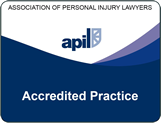It’s the perfect season for a bike ride, with the sun shining and temperatures rising, signalling the arrival of Summer. As more people head outdoors to enjoy the warm weather, traffic increases, including cars, bicycles, and pedestrians. Unfortunately, this also elevates the risk of bicycle accidents. Particularly bicycle accidents involving cars and other motor vehicles.
Liability in Bicycle Accident Claims
Both drivers and cyclists owe each of a duty of care whilst out on the roads. When a cyclist hits your car, determining liability is crucial and often straightforward if negligence is evident. Negligence can occur on the part of either the motorist or the cyclist.
Examples of Driver Negligence:
- Speeding
- Using a phone while driving
- Driving without due care and attention
- Performing dangerous manoeuvres (erratic overtaking, undertaking, weaving across lanes)
- Ignoring traffic signals and road signs
Examples of Cyclist Negligence:
- Not using designated cycle lanes
- Riding on non-designated pavements
- Failing to use lights and reflectors in low visibility
- Not signalling intentions to other road users
- Riding while distracted (e.g. using a mobile phone)
- Not wearing a helmet or proper safety gear
If a cyclist hits your car, or if you are a cyclist who has been struck by a vehicle, assess whether either party acted negligently. Consider whether actions could have been taken to prevent the accident or reduce the severity of the injuries sustained. In some cases, both parties may share responsibility, known as “contributory negligence.” In cases of contributory negligence, the level of compensation awarded to you may be reduced depending on the degree of negligence on your part.
Understanding these principles can help in assessing the situation and pursuing a claim if necessary.
Evidence to support your Bicycle Accident Claim
If you are involved in a road traffic bicycle accident it is crucial to remain calm and take immediate steps to ensure safety and proper documentation of the incident. First and foremost, assess the situation to determine if anyone is injured. If there are injuries, prioritise medical aid by calling emergency services, even if the injuries seem minor.
Once you have moved to a safer space, this may be the side of the road, it is important that you collate evidence. This includes taking photographs of the accident from multiple angles, capturing the positions of the vehicles, any visible damages, road conditions, and any relevant road signs or signals. If there are witnesses, take their contact information. In the event you do make a bicycle accident claim, their statement could help to determine liability.
If the police attend your bicycle accident, it’s beneficial to file a report detailing how the incident occurred. This ensures that a fresh, accurate account of the circumstances is documented. Additionally, review your insurance policy thoroughly, as many insurers require you to report any accidents promptly. This can help ensure that all necessary information is recorded and your claim process proceeds smoothly.
Claiming Bicycle Accident Compensation with Stonehewer Moss
Bicycle accident claims are unfortunately more common than you may think. In 2022 alone, there were upwards of 15,500 of reported pedal cycle casualties in the UK with almost a third of accidents resulting in serious injuries.
If you are looking for advice from a bicycle accident lawyer, look no further than Stonehewer Moss. With over 20 years of experience in personal injury, our team of APIL accredited solicitors are equipped with the required knowledge and expertise to bring a successful bicycle accident compensation claim.
We offer specialist legal advice to anyone who needs it, via our free 30 minute consultations. Contact Stonehewer Moss today by the onsite contact form, phone, email or pop into the office for a face-to-face meeting.
Talk to our claims solicitor
Call us on freephone 0800 434 6544 or 01606 87 22 00
Email us at info@stonehewermoss.co.uk


